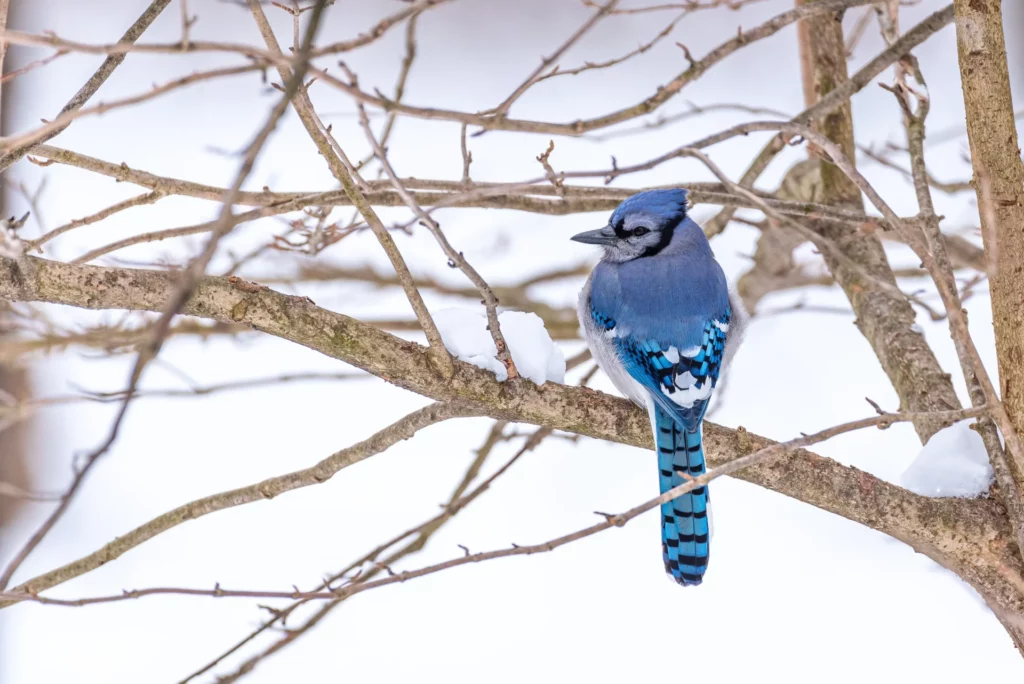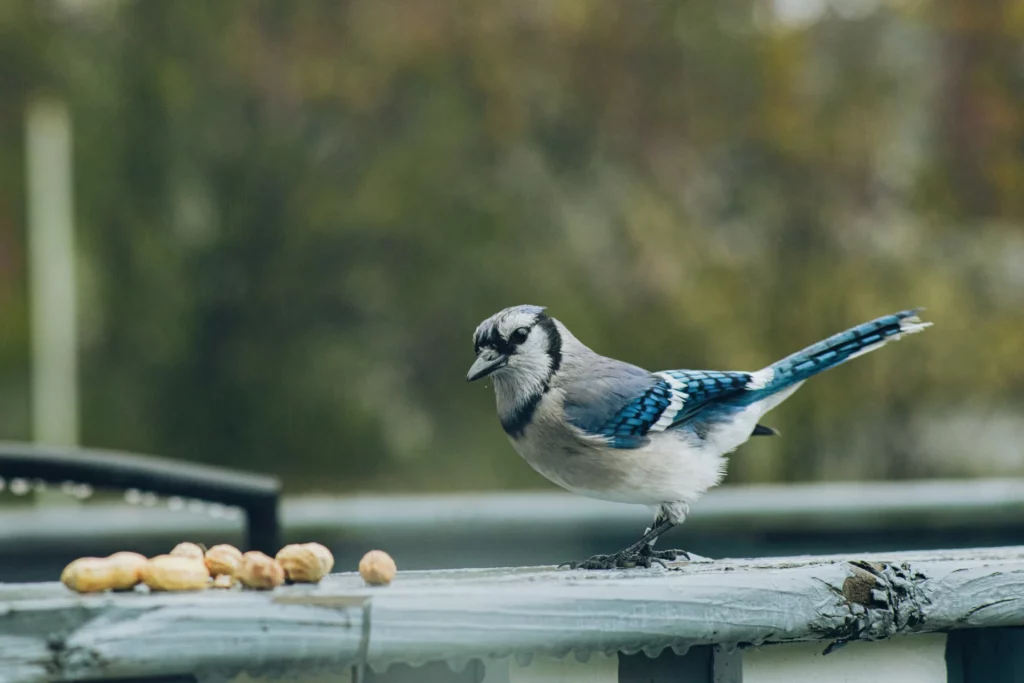The blue jay is one of the most mesmerizing birds. Their striking blue color makes them a bird watcher’s favorite. Many people try to learn their migratory habits to spot them. So the ultimate question is, do blue jays migrate?
Yes, Blue jays migrate but their migratory habits are still a mystery. Even scientists and experts cannot find a logical explanation for why and when they migrate. Some birds choose to migrate in flocks, but others do not migrate at all.
Even more interesting, those who migrate do not always return the following year. Moreover, the birds that stayed behind might choose to migrate the next year. It is quite the head-scratcher.
Do Blue Jays Migrate?
Blue Jays are migratory birds, and they usually migrate during the winter. They will flock and migrate to the Great Lakes every year and go south along the East Coast.
These flocks can have around 50 blue jays at a time. It is one of the most spectacular things to witness if you are into bird watching. Interestingly, not all blue jays migrate at the same time. Some blue jays stay through the whole winter in the same places.
The birds that did not migrate sometimes fly to the South. Additionally, the bird that migrated may choose to remain where they migrated to. This is quite interesting compared to other migratory birds.
Less than 50% of avian species are believed to be migrating to the southern hemisphere. The percentage may decrease to a minimum of 20%.
It seems like migration depends on each bird individually too. Experts cannot come up with a logical explanation as to why some birds migrate while others do not. Moreover, the birds that migrate do not travel farther than a few hundred miles.
Blue jays are small birds. As a result, the long migration can take a toll on their bodies. It is also recorded that the birds that do not migrate have a higher survival rate than those that do.
What Time of Year Do Blue Jays Migrate?
Some bluejays migrate during the summer, and others migrate during the winter. Birds that migrate during the summer move south and return to their summer breeding grounds.
They do not always do this, though. For example, if the bird’s breeding ground is in the warmer regions, they stay there throughout the year. Additionally, not all blue jays migrate during the winter, either.
Birds that live in northern climates where the weather is pretty cold migrate to the south. But some birds will choose to remain in their breeding grounds. Spring migration for blue jays happens between April to June. Then it starts again in September till October for birds that migrate to the South for winter.
Blue jays migrate during the day. So, if you want to see them migrating, catching them flying during the daylight is your best option.
Where Do Blue Jays Migrate to and From?
As mentioned, blue jays do not migrate more than a few hundred miles at a time. Otherwise, it will take a significant toll on their bodies. Thousands of blue jays migrate along the Atlantic coasts and the Great Lakes.
They might go south to states like southern Florida and also Alabama. The great lakes are the best place to witness blue jay migration.
Then the next year, they might choose to stay in the north during the winter. Some have even seen blue jays migrate from Alabama to Louisiana, 17 km off the gulf coast.
Where Do Blue Jays Prefer To Nest?
You will find blue jays in many parts of the US and Canada. You will also find them nesting in the Pacific Northwest.
Other blue jays can nest in faraway lands like central Canada and even the Rocky Mountains. Some blue jay birds will remain the entire year in eastern New Mexico and Wyoming during the winter.

They nest in either deciduous or coniferous trees, and their nests can be 8 to 30 feet above the ground. Additionally, both male and female blue jays build nests.
Where Do the Blue Jays Go in the Winter?
If food is scarce, blue jays will migrate south during the winter. Although, not all blue jays migrate when it is cold. Some birds choose to stay in throughout the winter. Moreover, those who do migrate might not migrate back the next year.
You will find blue jays along the Gulf Coast, South of Florida, and central Texas. They will choose to live where they migrated to and forage there. During the winter, they look for thick foliage. It keeps them warm and protected.
Blue jays in the southern parts of the US are often found to be swollen when they journey to the north. Many have also seen blue jays in large flocks migrating to the western states during winter.
What Do Blue Jays Do To Survive the Winter
Since not all blue jays migrate during the winter, they must adapt to survive. Their ability to adapt to their environment is one of the most significant factors in their survival.
When the weather is very cold, like in winter, these birds seek out foliage. They nest in thick shrubbery, which gives them ample cover and protection. It helps to protect them from the snow and the cold, harsh winter winds.
Shelter and food are their primary priorities. After they find adequate shelter, they will search for food. Blue jays eat primarily nuts, seeds, berries, and acorns during the winter.
These foods help them to regulate their body temperature and stay warm and safe. These birds also prepare beforehand for the winter.

They store nuts, acorns, and other foods during the growing season. Then, when food is scarce in the winter, the birds will visit their stash to eat from it.
Moreover, they will also grow additional feathers. This phenomenon happens right before winter hits. Growing additional feathers is not uncommon. Many other cardinals grow extra feathers before winter to retain their body heat.
Where do Blue Jays Live Rear Round?
There are typically two types of habitats: deserts and forests. Blue jays prefer forest environments. Those kinds of habitats are the most suitable for it.
They like to nest in trees high up in the air. However, blue jays are fringe species. Which means they adapted well to living near us. As a result, you will find them in gardens and parks as well.
Then there is the range of blue jays. Which simply means what area their habitat covers. You can find these bright blue birds almost all around North America.
However, they prefer areas that have trees and plenty of food. You will also find blue jays in the eastern half of Texas and Florida. Typically the birds in Florida do not migrate.
These birds can be found in the Pacific Northwest and Canada as well. However, the blue jay habitat is being significantly modified, so we see them expanding their range westward.
How Can You Witness Blue Jay Migration
Blue jays are extremely beautiful birds. And when they migrate, they might flock in groups of 50 or more. It is quite the spectacle. Fortunately, you can witness this migration yourself.
The Great Lakes region is the best place to experience the blue jay migration. They migrate to Wisconsin, Indiana, Ohio, Illinois, Michigan, Pennsylvania, and Minnesota.
You can also check out the migration along the shores of Lake Erie and Lake Ontario. The Canadian province of Ontario is included too!
Conclusion
So, do blue jays migrate? Yes and no. There is no consistent migratory behavior for these birds. Some birds choose to migrate while others do not. Experts have still not found any logical explanation as to why this happens.
It seems that migration depends on individual blue jay birds. But if you want to witness the migration of these birds, the Great Lake region is the best place to be.

